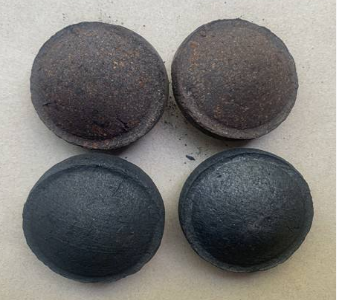Reasons for Briquette Machine Can't Press Coal Particles
The briquetting machine is a kind of equipment for pressing powdery materials into shapes. The briquette machine has a wide range of uses, which can fully press various pulverized coal (coking coal, lignite, caking coal, anthracite, etc.), mineral powder, dry powder, slag, and other powdery materials. There are many types of briquette machine, and the power is also different. When choosing, it should be decided according to the output required by customers.
According to analysis, the general briquette machine can not make coal particles completely compact, in addition to the raw material pulverized coal particle size, moisture, and other difficult control, there are the following two reasons:
1. When pulverized coal is under pressure, it is confronted by the internal friction of coal particles, which hinders the movement and approach of coal particles. That is to say, under the action of external force, due to the irregular shape and uneven particle size of pulverized coal, friction exists on the contact surface and points of particles, 'bridging' occurs between large particles, which affects the sliding of particles and makes the remaining gaps between particles unable to be filled.
2. It is the obstacle of coal particle elasticity mentioned many times before. Based on this analysis, a new concept has emerged, that is, when pulverized coal is subjected to high pressure, the coal particles are in close contact with each other, and then the coal particles are twisted. Because the coal particles are in close contact and then twist, the surface of the coal particles will undergo proper shear deformation. This shear deformation is called shear deformation. In this way, the coal particles can be compressed and then twisted to produce shear deformation.
It should be noted that for some soft bituminous coal and anthracite pulverized coal, it is not very difficult to make briquettes without a binder, and it can be directly formed without special forming methods. For example, some clean water wet coal used in small-scale synthetic ammonia and phosphate fertilizer production is one of the examples.





